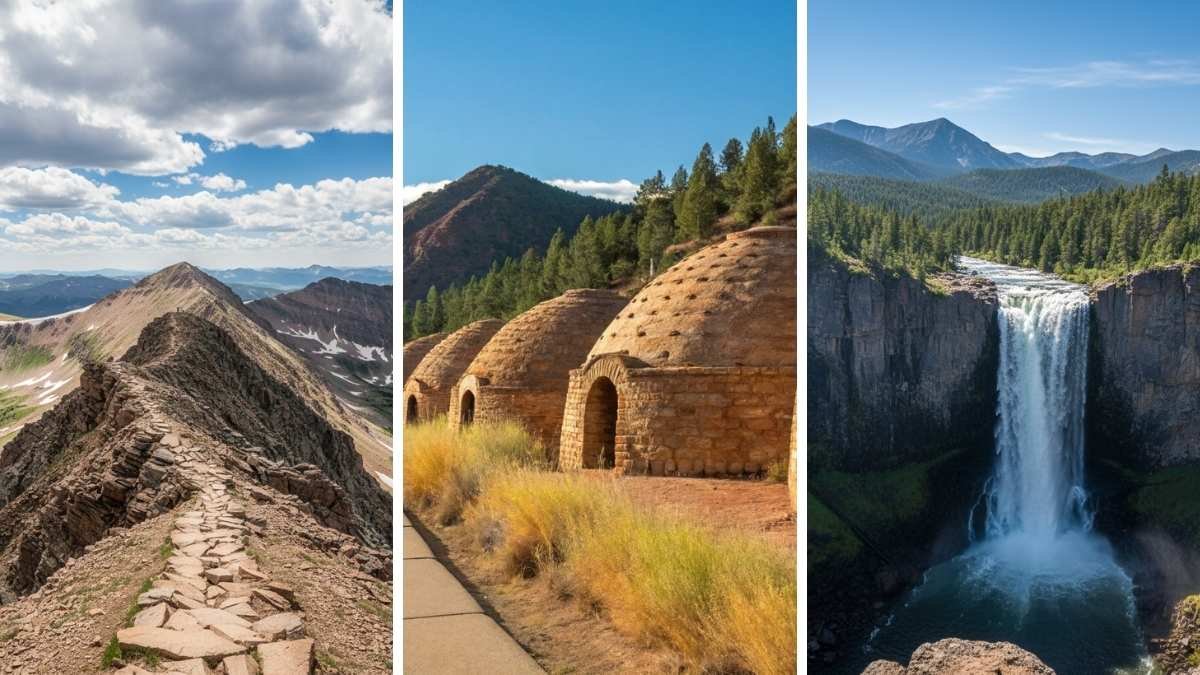
Colorado has a way of catching you off guard. Beyond its famous peaks and well-loved towns, there are places so striking they feel like secrets whispered by the land itself.
Think waterfalls hidden in caves, trails lined with wildflowers that stretch farther than the eye can see, and canyons where silence carries more weight than sound.
These aren’t the stops plastered on postcards—they’re the ones that leave you quietly amazed, wondering how they’ve managed to stay under the radar. If you’re ready to trade the familiar for the extraordinary, this list will lead you straight to Colorado’s hidden heart.
1. Zapata Falls
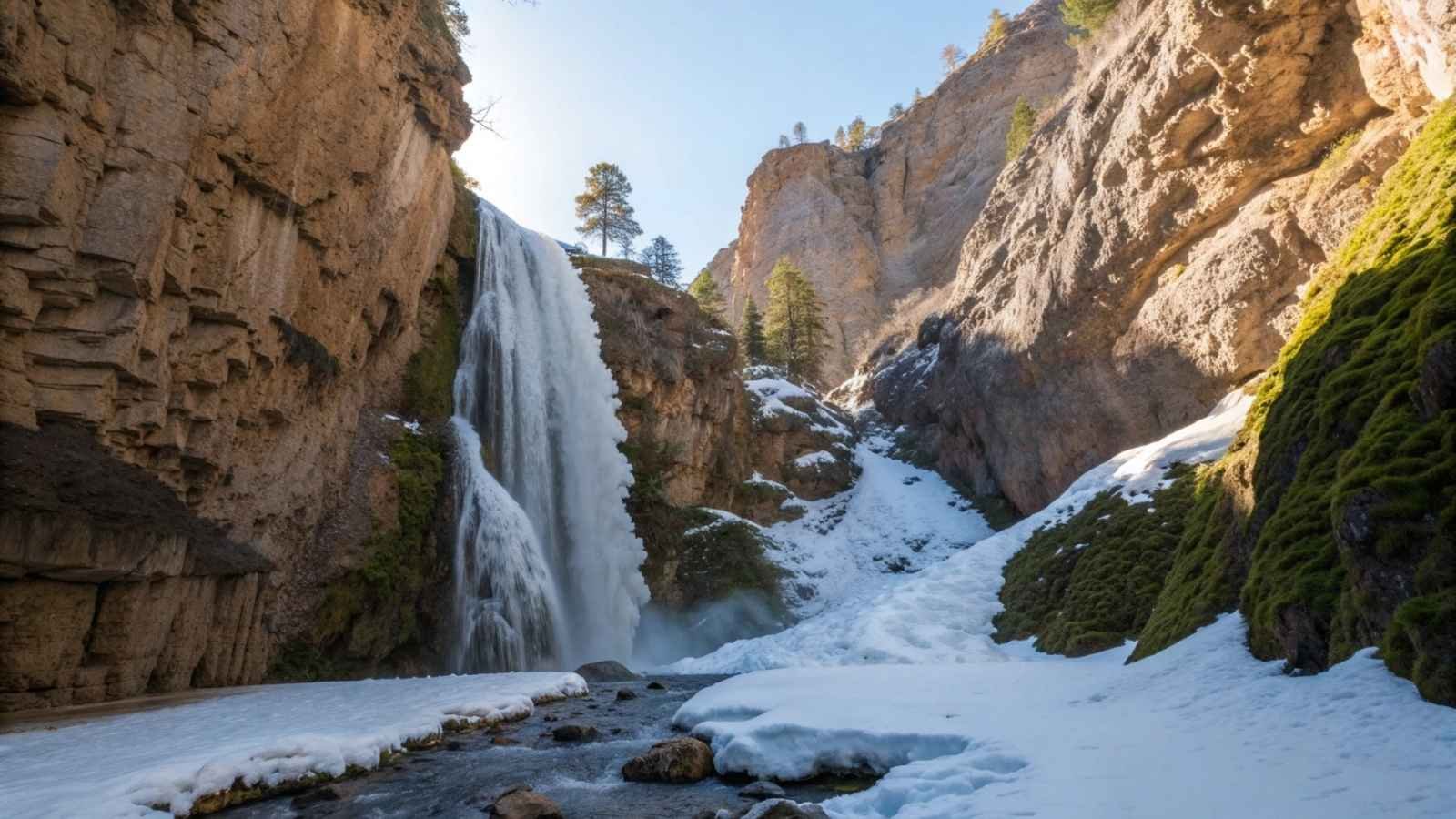
Tucked into the rugged Sangre de Cristo Mountains, Zapata Falls feels like a secret passage into another world. To reach it, you’ll hike a short but rocky trail that ends with icy creek crossings before you’re rewarded with a hidden waterfall tucked inside a narrow cave-like crevice. The sound of rushing water grows louder as you step into the cool shadows, and then the falls reveal themselves—cascading dramatically through the stone walls. It’s not a grand waterfall by Colorado standards, but its tucked-away setting makes it unforgettable.
What makes Zapata Falls so intriguing is how interactive the experience feels. You don’t just stroll up to an overlook; you have to wade, balance, and push your way into the heart of the rocks. It’s a mini adventure packed into just a mile of hiking. And the best part? From the trailhead, sweeping views of the Great Sand Dunes National Park stretch across the valley floor—so you get two incredible sights in one stop.
This is one of those places where you can feel both the raw power of nature and the thrill of finding something hidden. For those who like their hikes short but memorable, Zapata Falls is hard to beat.
Quick Guide:
- Best Months to Visit: Late spring to early fall (May–September); the water is too icy in winter.
- Nearest Town: Alamosa, Colorado.
- Trail Length: About 1 mile round trip.
- Good to Know: Water shoes or sandals are better than hiking boots for the creek crossings.
- Bonus: Combine with a day trip to Great Sand Dunes National Park just down the road.
2. Paint Mines Interpretive Park
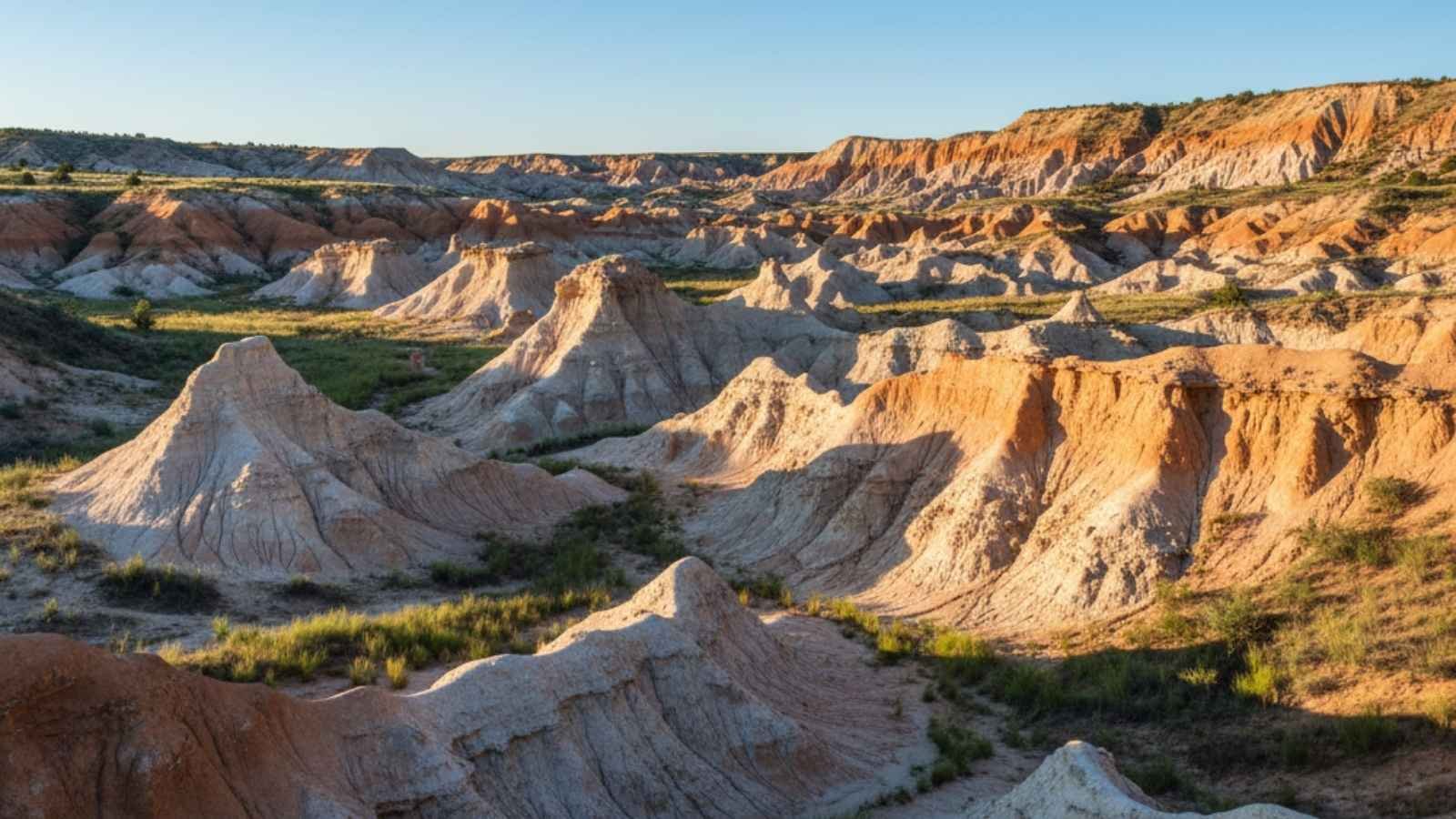
Colorado isn’t all alpine peaks—sometimes the most jaw-dropping sights are hidden in rolling prairies. Paint Mines Interpretive Park near Calhan is a surreal landscape of hoodoos, spires, and sandstone canyons streaked with vivid pinks, yellows, and purples. The colors come from oxidized minerals that Native peoples once used for paint, giving the park its name. Walking through the winding formations feels like stepping into a natural art gallery sculpted over millions of years.
It’s the kind of place that sneaks up on you. Driving across the plains east of Colorado Springs, you don’t expect to find a maze of otherworldly rock formations just below the surface. Once you drop down into the park, the kaleidoscope of colors and shapes feels endless. The contrast of bright prairie grassland above and multicolored sandstone below is simply stunning.
The park is quiet, spacious, and a great reminder that Colorado’s beauty isn’t limited to the mountains. Whether you’re a geology buff, a photographer, or someone who just likes wandering through unusual landscapes, Paint Mines leaves an impression that lingers long after your visit.
Quick Guide:
- Best Months to Visit: Spring and fall for mild weather; summer can be hot.
- Nearest Town: Calhan, about 45 minutes from Colorado Springs.
- Trail Length: 4 miles of easy trails loop through the park.
- Good to Know: Stay on designated trails; the formations are fragile.
- Bonus: Free entry, and usually far fewer crowds than mountain parks.
3. Bishop Castle
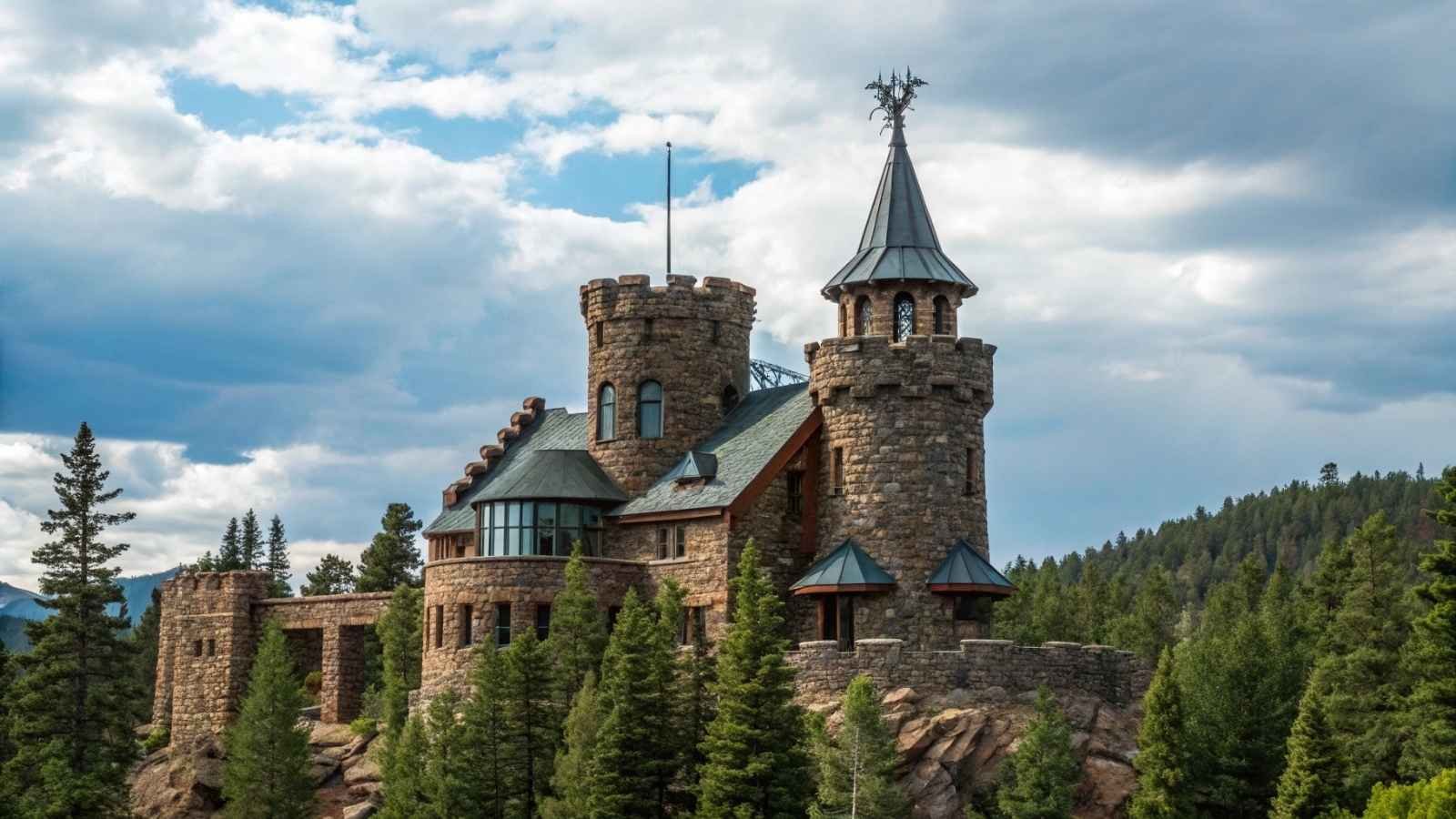
Bishop Castle is one of Colorado’s quirkiest roadside attractions, and it’s unlike anything you’ll find elsewhere. Built single-handedly by Jim Bishop over the course of decades, the structure is part medieval fortress, part fantasy playground, and entirely eccentric. Rising out of the forest near Rye, the castle features spiraling iron staircases, dragon heads that breathe fire, stained-glass windows, and turrets that seem to defy logic.
What makes Bishop Castle unforgettable isn’t just its appearance—it’s the story. Jim Bishop began construction in the 1960s, and what started as a small family project ballooned into a lifetime obsession. The castle is always evolving, with new additions cropping up as creativity strikes. The fact that one man dreamed it up and actually built it makes walking through it feel like stepping inside a passion project on steroids.
The castle is free to explore, and wandering up its narrow staircases and iron catwalks comes with a thrill that’s equal parts awe and nerves. It’s not your typical polished tourist attraction—it’s raw, rugged, and brimming with personality.
Quick Guide:
- Best Months to Visit: Year-round, though winter can be icy.
- Nearest Town: Rye, Colorado.
- Admission: Free, donations welcome.
- Good to Know: Safety rails are minimal—climb with caution.
- Bonus: Pair your visit with a scenic drive through the Wet Mountains.
4. Great Sand Dunes Oasis
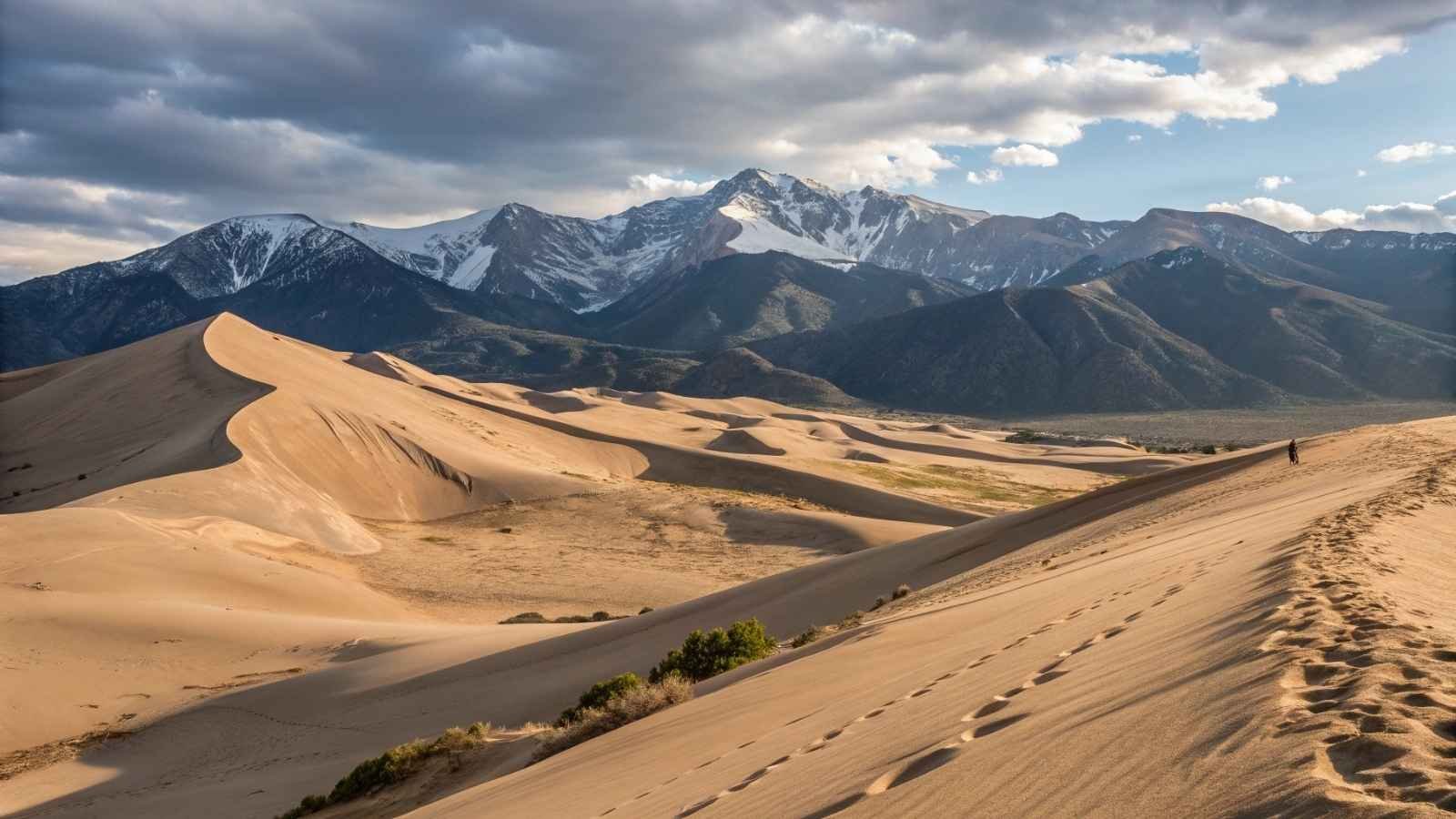
Just outside the entrance to Great Sand Dunes National Park, the Oasis offers a front-row seat to one of Colorado’s most unexpected landscapes: sweeping dunes rising dramatically against a backdrop of snowcapped peaks. While the dunes themselves are well known, the Oasis is the perfect low-key base for exploring them. It’s part campground, part lodge, part quirky outpost where the desert meets the mountains.
Something is refreshing about the mix of adventure and simplicity here. You can wake up in a rustic cabin or pitch a tent, then spend your day climbing the tallest dunes in North America. In the evening, return for hearty diner meals, cold drinks, and skies so dark that the Milky Way looks close enough to touch. The Oasis feels like a time capsule of old-school road tripping—relaxed, unpretentious, and perfectly situated.
For travelers who want to explore the dunes without the hassle of staying far away, this is the sweet spot. It’s both a gateway to adventure and a destination worth lingering at in its own right.
Quick Guide:
- Best Months to Visit: Late May–early October; spring runoff fills Medano Creek at the dunes’ base.
- Nearest Town: Alamosa, but the Oasis is just outside the park entrance.
- Accommodation: Campground, RV sites, cabins, and a small motel.
- Good to Know: Book early in peak summer—spots fill fast.
- Bonus: Don’t miss sandboarding rentals for sliding down the dunes.
5. Rifle Falls State Park
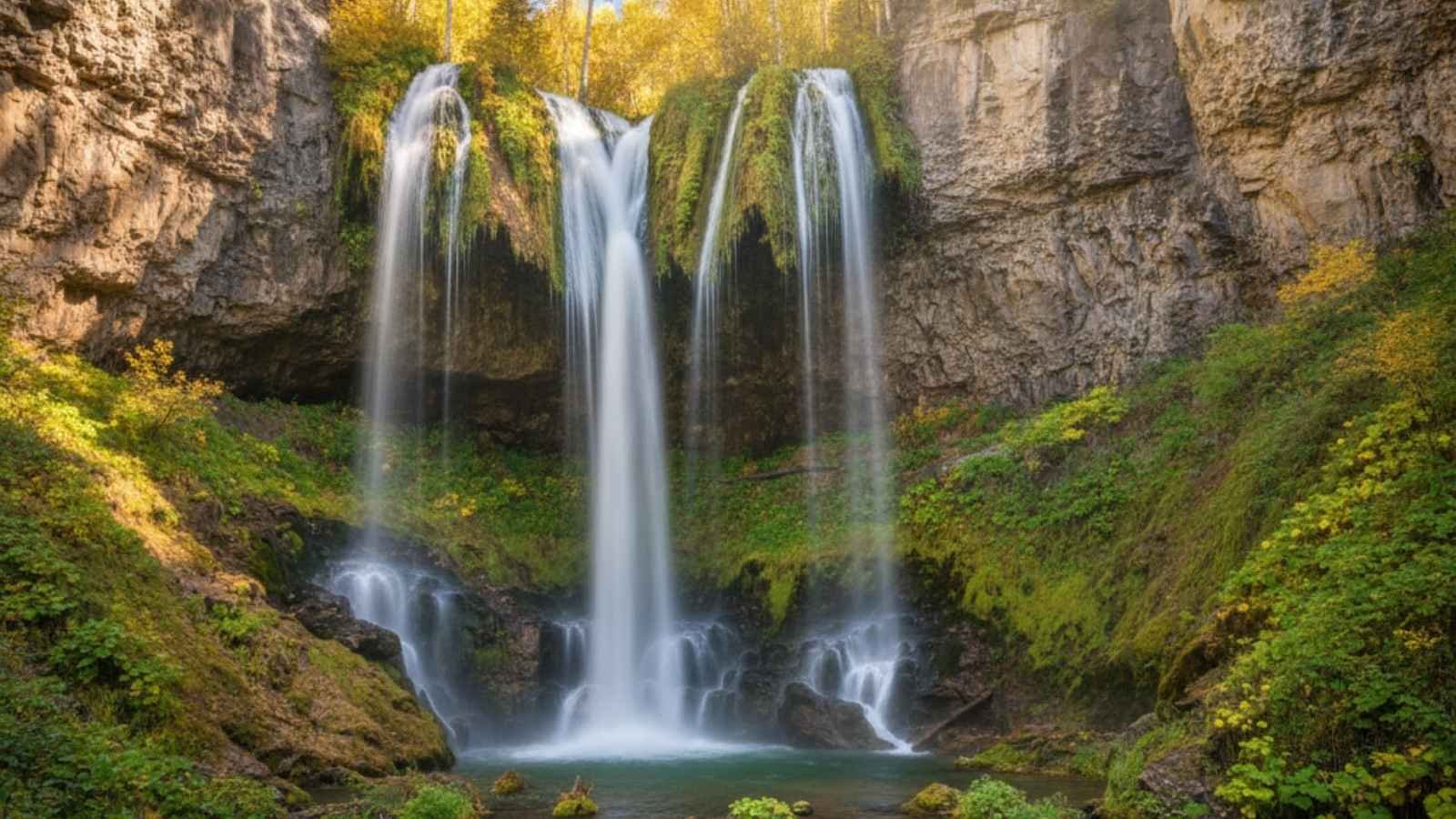
If there’s one word for Rifle Falls State Park, it’s “unexpected.” Instead of a single waterfall, you’re greeted by a trio of 70-foot cascades tumbling dramatically over limestone cliffs. The lush greenery here feels more like the Pacific Northwest than arid Colorado. Behind the falls, caves carved into the rock invite exploration, while trails loop through the forested canyon.
It’s the type of place that’s perfect for spending a whole afternoon—especially in summer, when the mist from the falls cools the air. Wildlife is abundant too; it’s not unusual to see deer, wild turkeys, or even the occasional fox as you wander the trails. For campers, the park offers shaded spots just steps from the falls, making it one of Colorado’s most peaceful overnight destinations.
What really sets Rifle Falls apart is its blend of scenery and accessibility. Whether you want to take a short walk to the base, hike the loop, or simply relax with a picnic by the water, it’s as flexible as it is beautiful.
Quick Guide:
- Best Months to Visit: Late spring through early fall for best flow and weather.
- Nearest Town: Rifle, Colorado.
- Activities: Hiking, camping, photography, wildlife viewing.
- Good to Know: Weekends fill quickly; weekdays are quieter.
- Bonus: Combine with a trip to nearby Rifle Gap State Park for water recreation.
6. Crested Butte Wildflower Trails
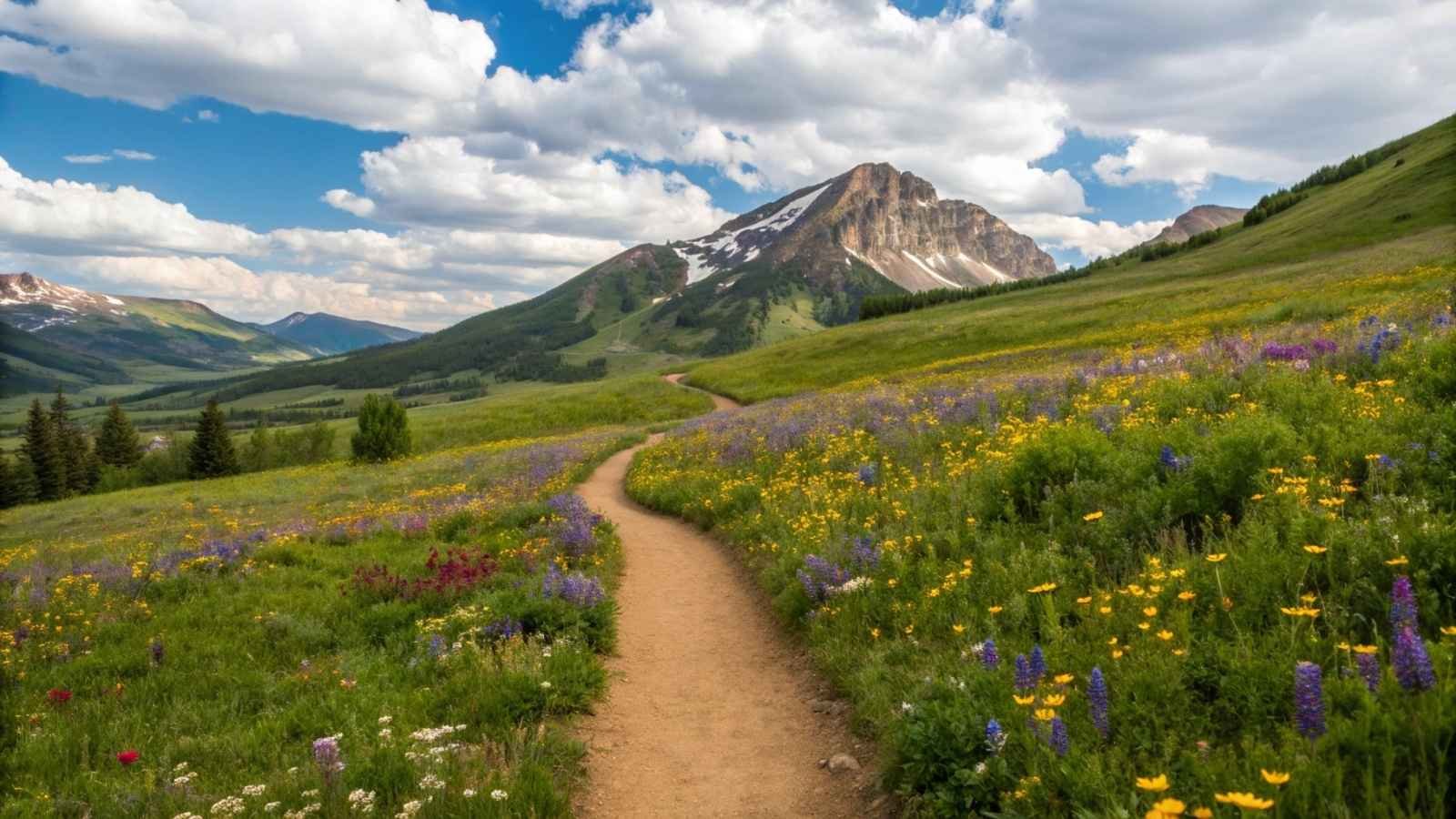
Crested Butte proudly calls itself the Wildflower Capital of Colorado, and once you see the summer blooms, it’s hard to argue. From mid-June through July, the alpine meadows surrounding the town transform into a kaleidoscope of color. Trails like Snodgrass Mountain and Rustler’s Gulch wind through fields bursting with columbines, lupines, and Indian paintbrushes, set against jagged peaks that seem to rise straight out of the flowers.
The experience isn’t just about the flowers—it’s about the sense of stepping into a vibrant alpine wonderland. Walking these trails feels alive, buzzing with bees and hummingbirds darting from blossom to blossom. Every turn reveals a new mix of colors, textures, and views, making even short hikes feel rewarding.
Crested Butte itself adds charm to the trip, with its laid-back mountain town vibe, historic main street, and summer festivals celebrating—you guessed it—the wildflowers. If there’s ever a time to fall in love with the Rocky Mountains, this is it.
Quick Guide:
- Best Months to Visit: Late June–mid-July (peak bloom).
- Nearest Town: Crested Butte.
- Trail Highlights: Snodgrass Mountain, Rustler’s Gulch, and Gothic Valley.
- Good to Know: Wildflower Festival runs every July with guided hikes.
- Bonus: Fall brings equally stunning aspen color displays.
7. Wheeler Geologic Area
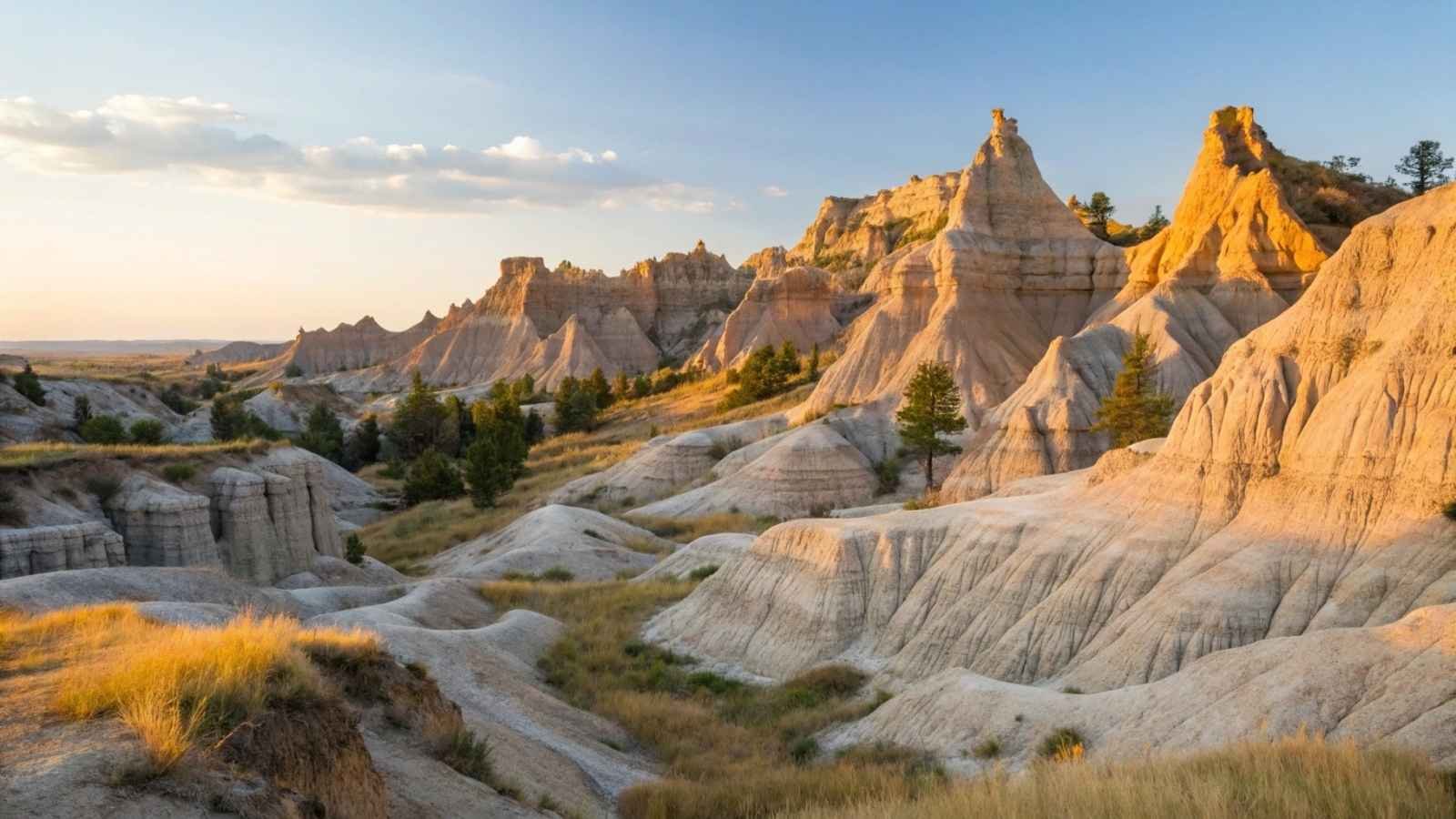
Hidden deep in the Rio Grande National Forest, Wheeler Geologic Area looks more like southern Utah than Colorado. The landscape is a maze of bizarre volcanic spires, pinnacles, and hoodoos carved from soft volcanic tuff over millions of years. Its remoteness is part of the appeal—you’ll drive a rough 14-mile 4×4 road or take an 8-mile hike to get there.
The payoff is stepping into a natural amphitheater of alien-looking formations, where light and shadow play tricks across the ridges. Few visitors make the trek, so the quiet is almost as impressive as the scenery itself. You can wander among the towers, soaking in their intricate textures and feeling like you’ve stumbled onto another planet.
Wheeler is one of Colorado’s least-visited gems, largely because of how hard it is to access. But for those willing to make the journey, it rewards you with jaw-dropping solitude and landscapes that defy expectations.
Quick Guide:
- Best Months to Visit: Late June–September (snow-free access).
- Nearest Town: Creede, Colorado.
- Access: High-clearance 4×4 or an 8-mile hike.
- Good to Know: Bring plenty of water and start early—there are no services.
- Bonus: Combine with a visit to Creede, a historic mining town with artsy flair.
8. Garden Park Fossil Area
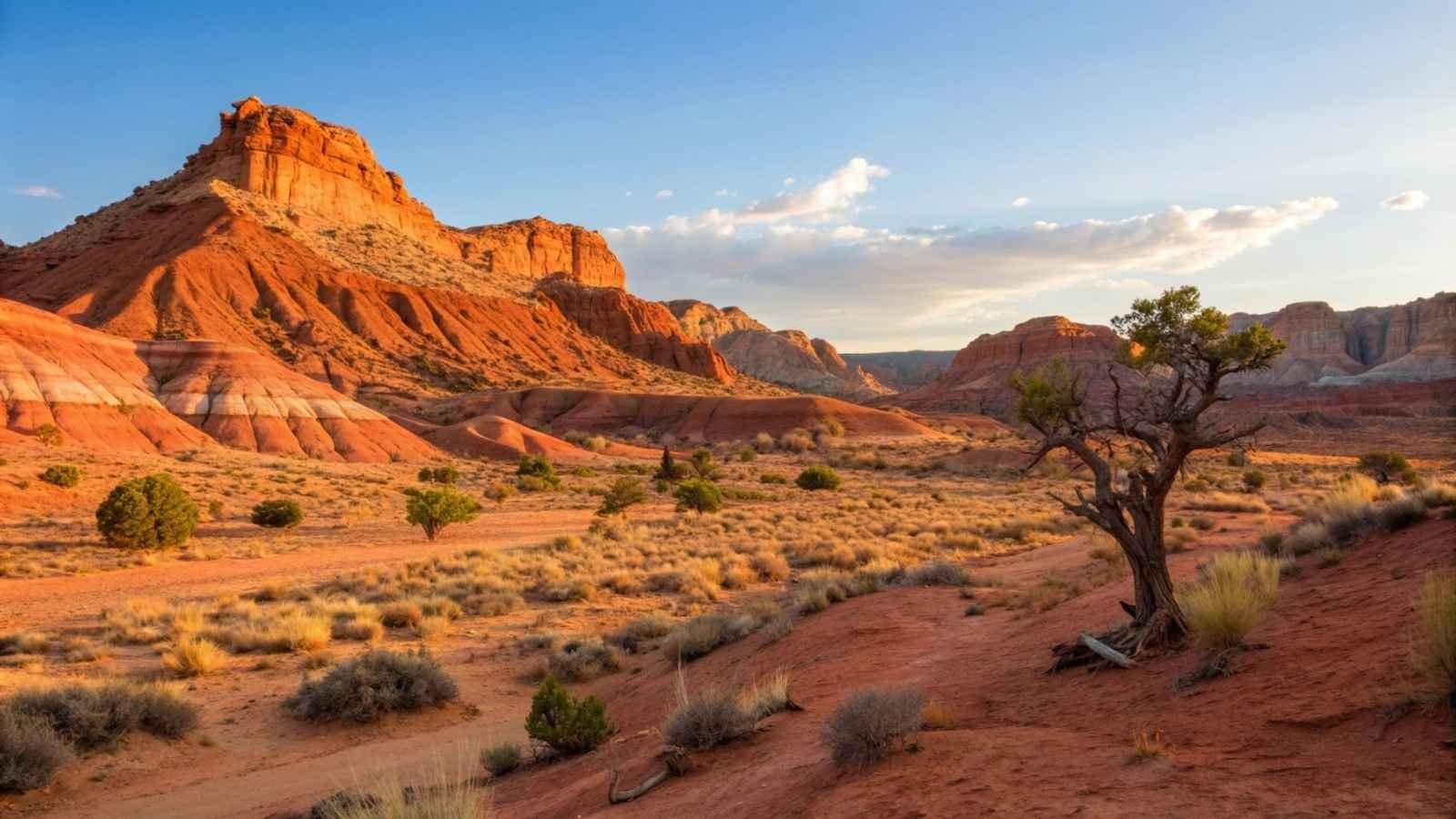
If you’re fascinated by dinosaurs, Garden Park Fossil Area is one of Colorado’s most exciting hidden treasures. Located just north of Cañon City, this site has produced some of the most famous Jurassic-era fossils in the world, including specimens now displayed at the Smithsonian. Today, you can walk the same landscape where paleontologists uncovered entire skeletons of giant sauropods and carnivores.
Beyond its history, the area itself is beautiful. Trails wind through red rock formations and quiet desert canyons, with interpretive signs explaining the significance of the fossils found there. It’s an outdoor museum set in the middle of wild scenery, where science and nature collide.
The site is quiet and low-key—no flashy exhibits or big tourist centers—just the raw landscape and the stories it holds. That makes it a perfect stop for anyone who loves both the outdoors and a bit of natural history.
Quick Guide:
- Best Months to Visit: Spring and fall for cooler weather.
- Nearest Town: Cañon City, Colorado.
- Activities: Hiking, fossil history exploration, and photography.
- Good to Know: Stay on trails; fossil collecting is prohibited.
- Bonus: Pair with a visit to the nearby Royal Gorge for a completely different adventure.
9. Redstone Coke Ovens
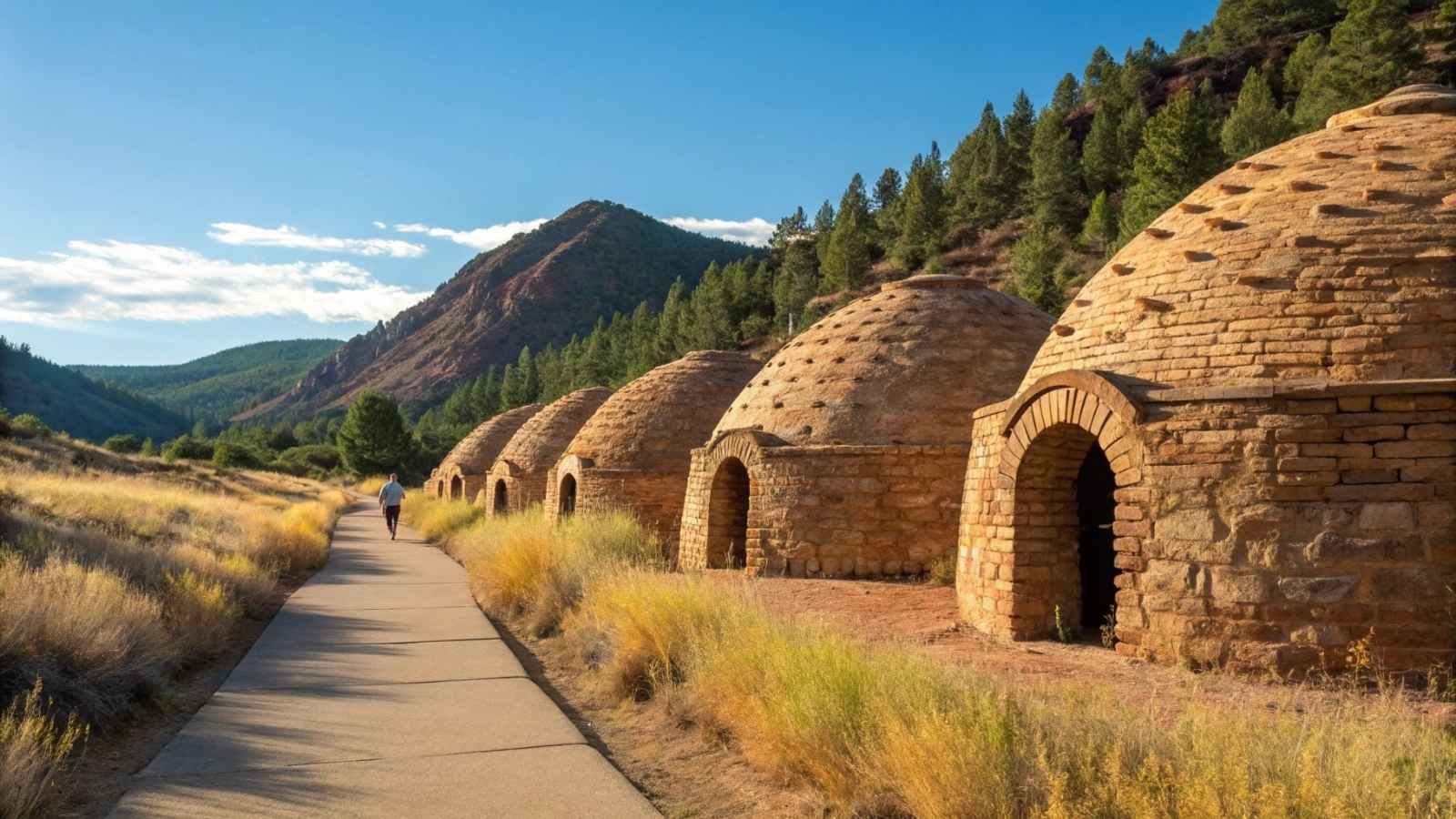
Driving through the Crystal River Valley, you might spot a row of beehive-shaped stone structures lining the roadside—these are the Redstone Coke Ovens, remnants of the region’s mining boom. Built in the late 1800s, they were used to refine coal into coke for smelting iron. Today, they stand as quirky, photogenic relics of Colorado’s industrial past.
What’s fascinating about the ovens is their sheer number—over 200 were originally built, and many remain. Their rounded, brick domes look almost medieval, like something out of an old European village, but their history is uniquely tied to Colorado’s mining days. Interpretive signs explain their function and the rise and fall of Redstone as a company town.
Surrounded by lush mountain scenery, the ovens are a striking contrast of manmade history against natural beauty. They don’t take long to visit, but they’re worth the stop, especially if you’re already exploring the valley on your way to Marble or Crystal Mill.
Quick Guide:
- Best Months to Visit: Year-round; accessible by car.
- Nearest Town: Redstone, Colorado.
- Activities: Historic site viewing, roadside stop, photography.
- Good to Know: Best combined with other Crystal River Valley attractions.
- Bonus: Redstone itself has charming inns and a rich mining history.
10. North Clear Creek Falls
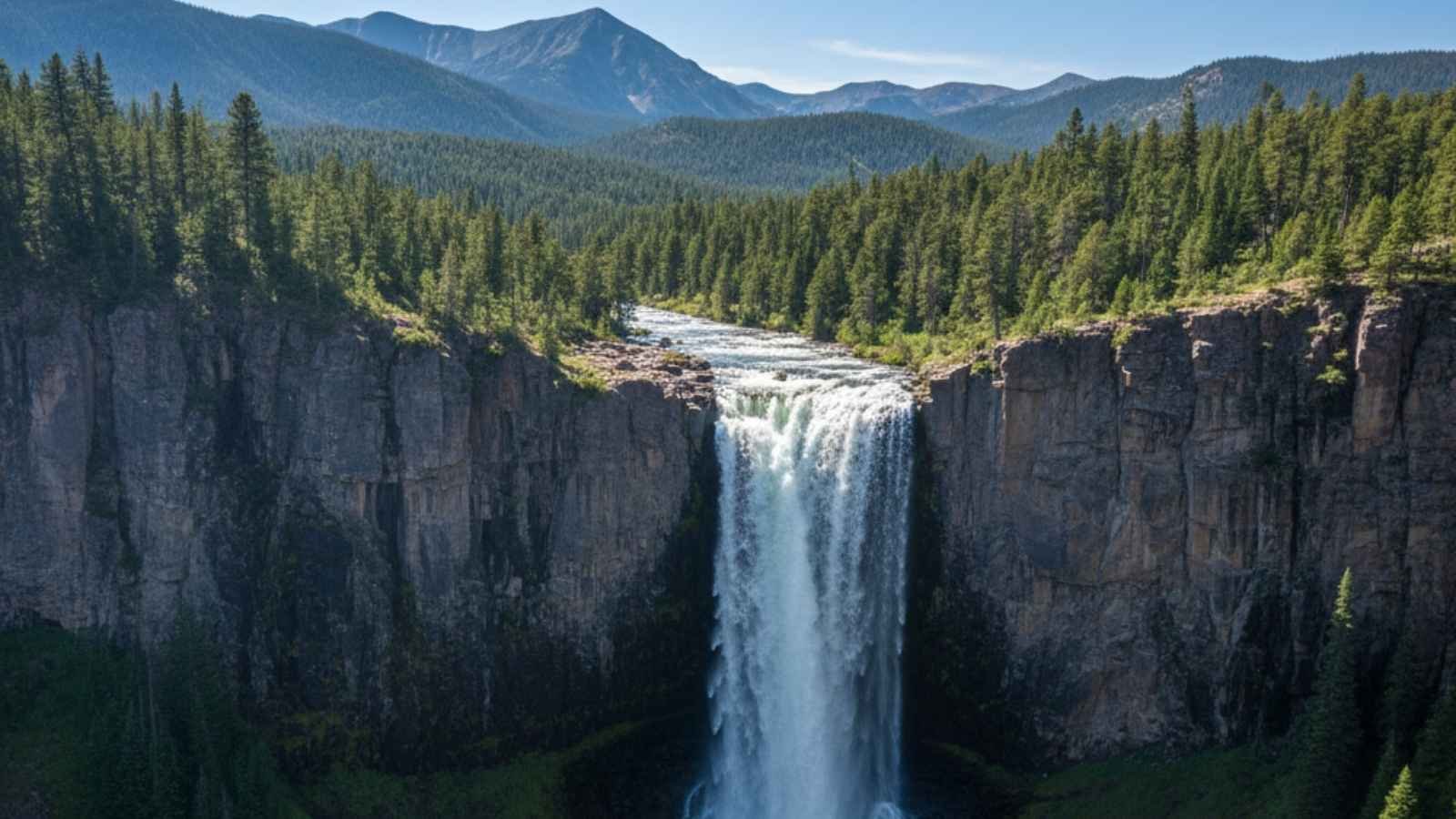
Often overlooked in favor of bigger-name Colorado waterfalls, North Clear Creek Falls is a hidden powerhouse. Located along the Silver Thread Scenic Byway near Lake City, this 100-foot waterfall plunges dramatically into a rugged box canyon. Unlike some hikes that require effort, here you’ll find a short trail from the parking lot leading directly to a spectacular overlook.
The setting is pure Colorado—lush meadows and forests at the top, rugged cliffs below, and often a rainbow shimmering in the mist. It’s one of those rare spots where accessibility and breathtaking beauty go hand in hand. Even a quick stop leaves a lasting impression.
Because it’s tucked away in a quieter corner of the state, North Clear Creek Falls rarely draws large crowds. That means you can soak in the roar of the falls and the sweeping canyon views in relative peace, a true treat in a state where popular waterfalls often come with packed parking lots.
Quick Guide:
- Best Months to Visit: Late spring through fall (water flow is strongest in early summer).
- Nearest Town: Lake City, Colorado.
- Access: Short, easy walk from a roadside parking lot.
- Good to Know: Great picnic spot; bring lunch and enjoy the overlook.
- Bonus: Combine with a road trip along the Silver Thread Scenic Byway for epic views.
11. Dunton Hot Springs
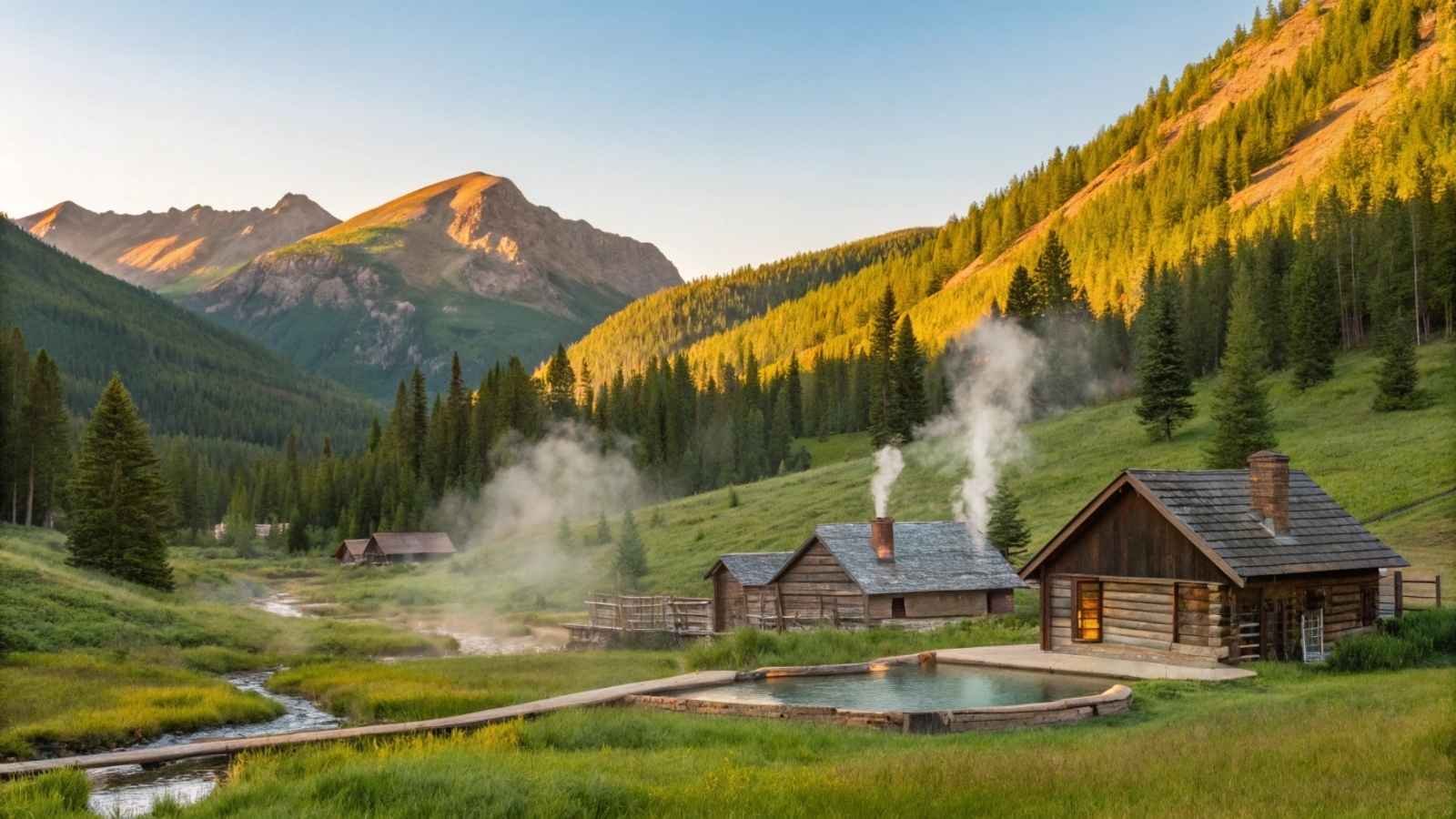
Hidden deep in the San Juan Mountains, Dunton Hot Springs is a restored 19th-century ghost town turned into a luxurious retreat. Old log cabins have been transformed into upscale lodgings, yet the rustic charm remains intact—think hand-hewn beams, wood-burning stoves, and the soothing sound of nearby hot springs bubbling day and night. What was once a forgotten mining camp is now an oasis for those craving both adventure and comfort.
The real magic here is the hot springs themselves. Guests can soak in restored bathhouses or slip into outdoor pools where steaming mineral water rises against a backdrop of snowy peaks. Whether you visit in the stillness of winter or the blooming wildflower season, the springs feel like a secret slice of indulgence carved out of wilderness.
This isn’t your typical tourist stop—it’s a mix of history, relaxation, and exclusivity. Staying here feels more like being let in on a secret than simply booking a room, and that sense of discovery is what makes it stand apart.
Quick Guide:
- Best Months to Visit: Year-round; winter for cozy snow scenes, summer for wildflowers.
- Nearest Town: Dolores, Colorado.
- Experience: Luxury cabins, gourmet meals, private hot springs.
- Good to Know: This is a high-end destination with limited availability—reserve early.
- Bonus: Activities include horseback riding, fly-fishing, and heli-skiing.
12. Florissant Fossil Beds National Monument
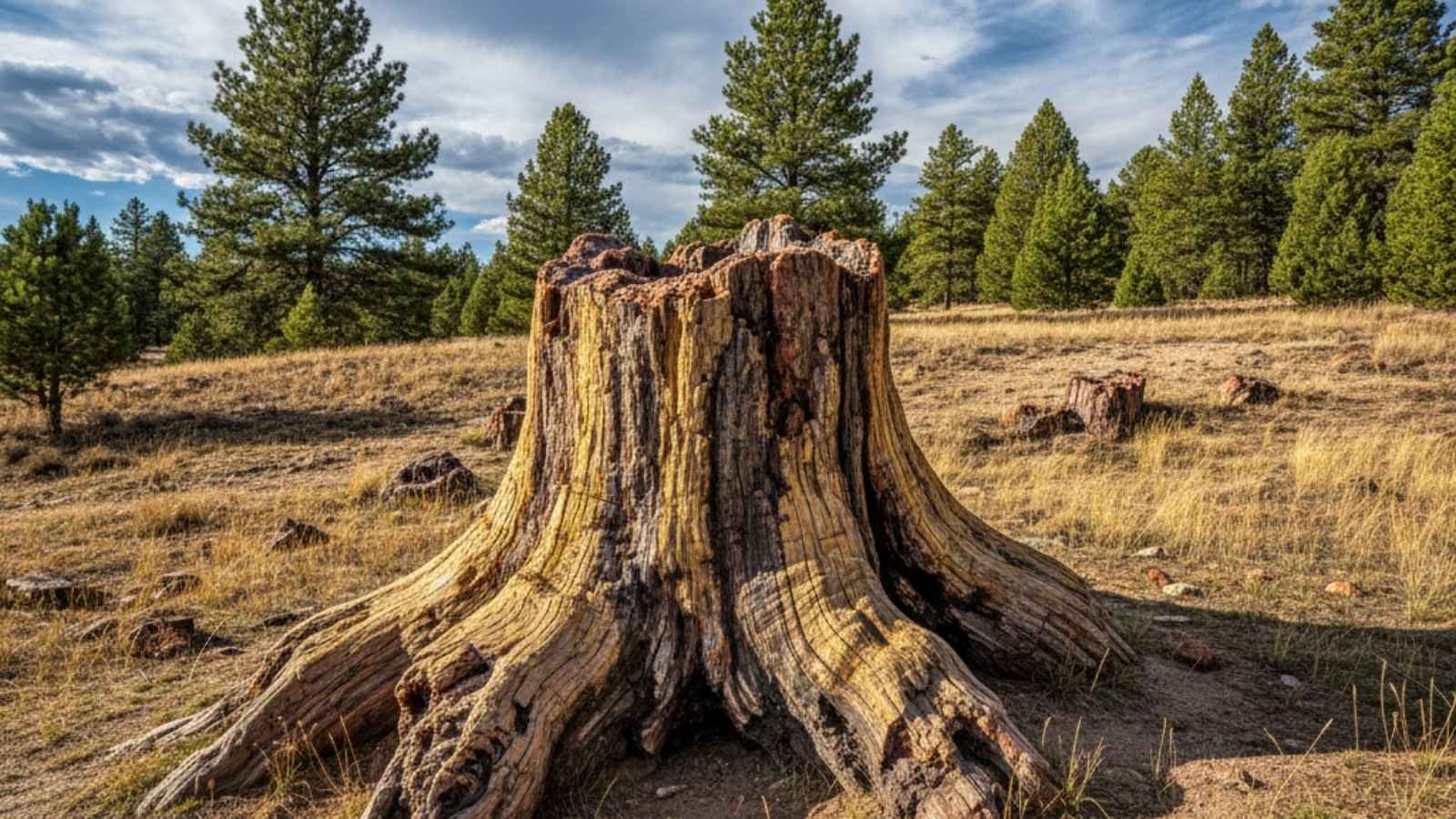
For those who love natural history, Florissant Fossil Beds National Monument is a window into the distant past. Here, giant petrified redwood stumps rise from the ground, remnants of forests that thrived over 34 million years ago. Surrounding them are fields that have yielded an astonishing variety of fossils—everything from tiny insects to plants preserved in remarkable detail.
Walking the trails feels like stepping into an ancient world while still being firmly rooted in Colorado’s present beauty. Meadows sway with wildflowers, groves of aspen shimmer in the breeze, and interpretive signs help connect today’s landscape with the prehistoric story it tells. It’s a place where science and scenery overlap beautifully.
Florissant isn’t just about fossils—it’s about perspective. Standing next to tree trunks wider than your arm span, you’re reminded of how fleeting human time is compared to Earth’s story. That quiet humbling is part of the experience.
Quick Guide:
- Best Months to Visit: Spring through fall; winter trails may be snow-covered.
- Nearest Town: Florissant, Colorado.
- Highlights: Giant petrified redwoods, fossil exhibits, and easy hiking trails.
- Good to Know: The visitor center has displays of actual fossil discoveries.
- Bonus: Perfect family-friendly stop with accessible trails.
13. St. Elmo Ghost Town
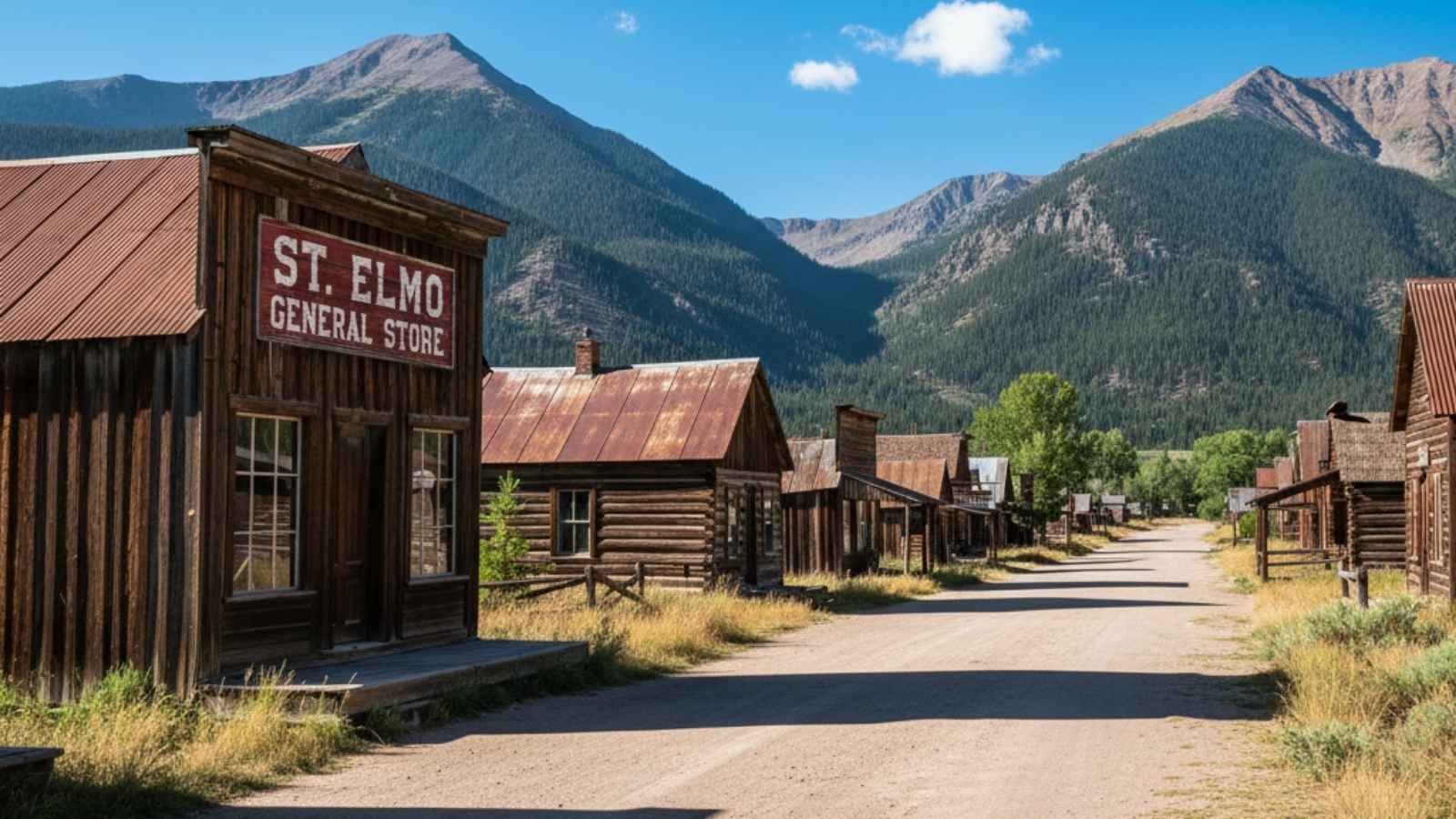
Few places capture Colorado’s mining history quite like St. Elmo, one of the state’s best-preserved ghost towns. Once a bustling hub during the silver boom of the late 1800s, today it’s eerily quiet, with wooden storefronts, weathered homes, and a general store that feels frozen in time. Walking its dirt streets transports you straight back into the Wild West.
The appeal isn’t just in the buildings, though—it’s in the atmosphere. You can almost sense the lives once lived here, the echo of saloon doors swinging and miners’ boots crunching on the boardwalk. Unlike commercialized “ghost towns,” St. Elmo remains largely authentic, giving it a raw, lived-in feel.
For those who love blending history with outdoor adventure, St. Elmo is also a gateway to hiking and off-road trails into the surrounding Sawatch Range. It’s the kind of stop that satisfies both the curiosity seeker and the outdoor enthusiast.
Quick Guide:
- Best Months to Visit: Summer and early fall; winter access is limited.
- Nearest Town: Buena Vista, Colorado.
- Highlights: Historic buildings, general store, ghost town vibes.
- Good to Know: Chipmunks at the edge of town are famously friendly—bring sunflower seeds.
- Bonus: Combine with a scenic drive up Cottonwood Pass.
14. Devil’s Causeway
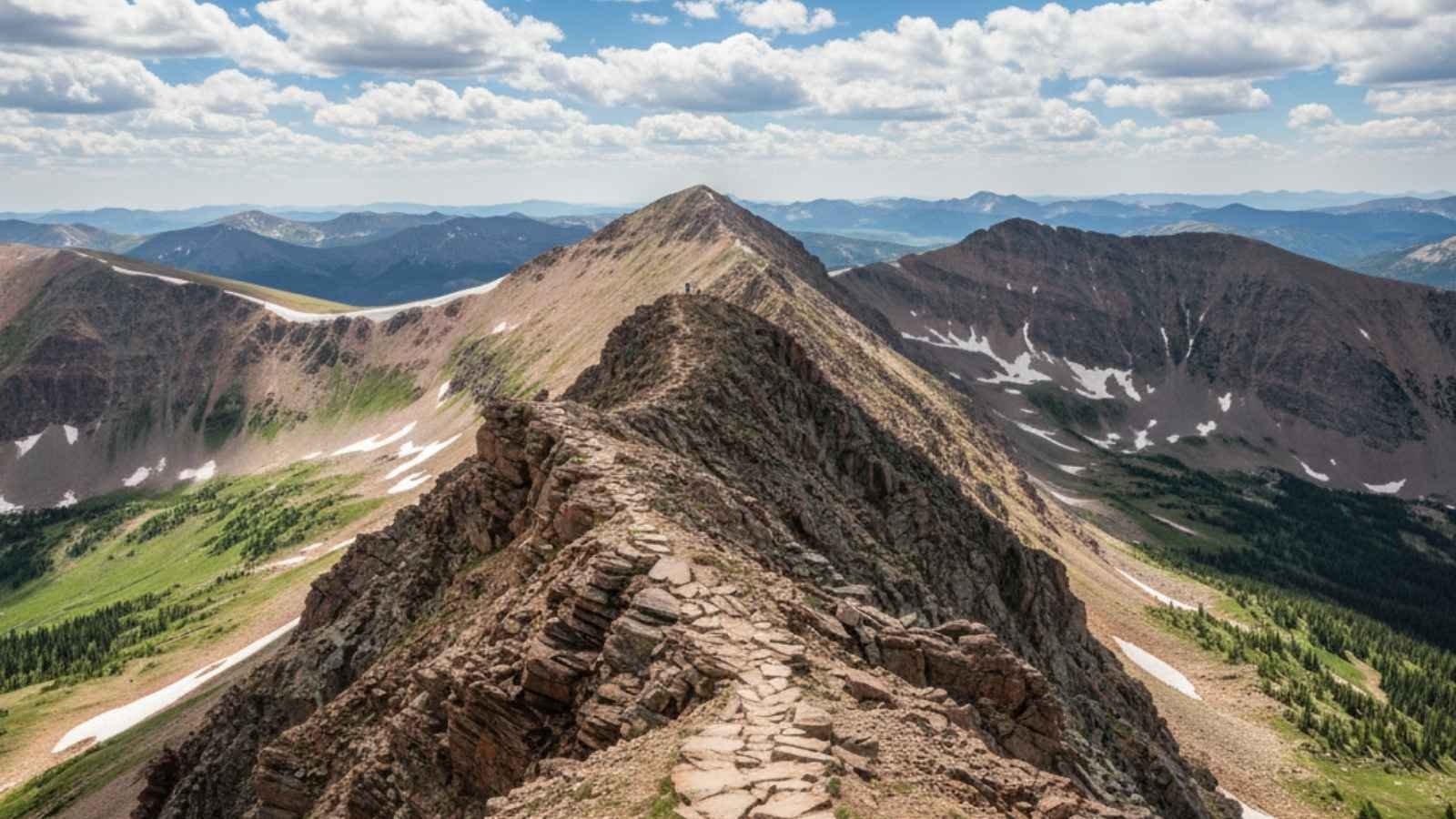
If you’re craving adrenaline with your mountain views, Devil’s Causeway delivers. This narrow rock ridge, just 4 to 5 feet wide in spots, drops off dramatically on either side—hundreds of feet down into alpine valleys. Crossing it is both thrilling and nerve-wracking, but the reward is panoramic views of the Flat Tops Wilderness stretching endlessly in every direction.
The hike leading to the Causeway isn’t just about the ridge—it takes you through rolling meadows, alpine lakes, and forests that are stunning in their own right. By the time you reach the knife-edge, you’ve already experienced some of Colorado’s most pristine wilderness. But it’s that dizzying, exposed crossing that tends to stick in memory the longest.
Not everyone chooses to cross, and that’s part of the beauty: you can still enjoy the views without braving the tightrope walk. Either way, it’s a day you won’t soon forget.
Quick Guide:
- Best Months to Visit: July–September, after the snow has melted.
- Nearest Town: Yampa, Colorado.
- Trail Length: 6–10 miles, depending on route.
- Good to Know: The ridge isn’t for those afraid of heights; proceed with caution.
- Bonus: Part of the scenic Flat Tops Wilderness Area, ideal for multi-day backpacking.
15. Dominguez Canyon Wilderness
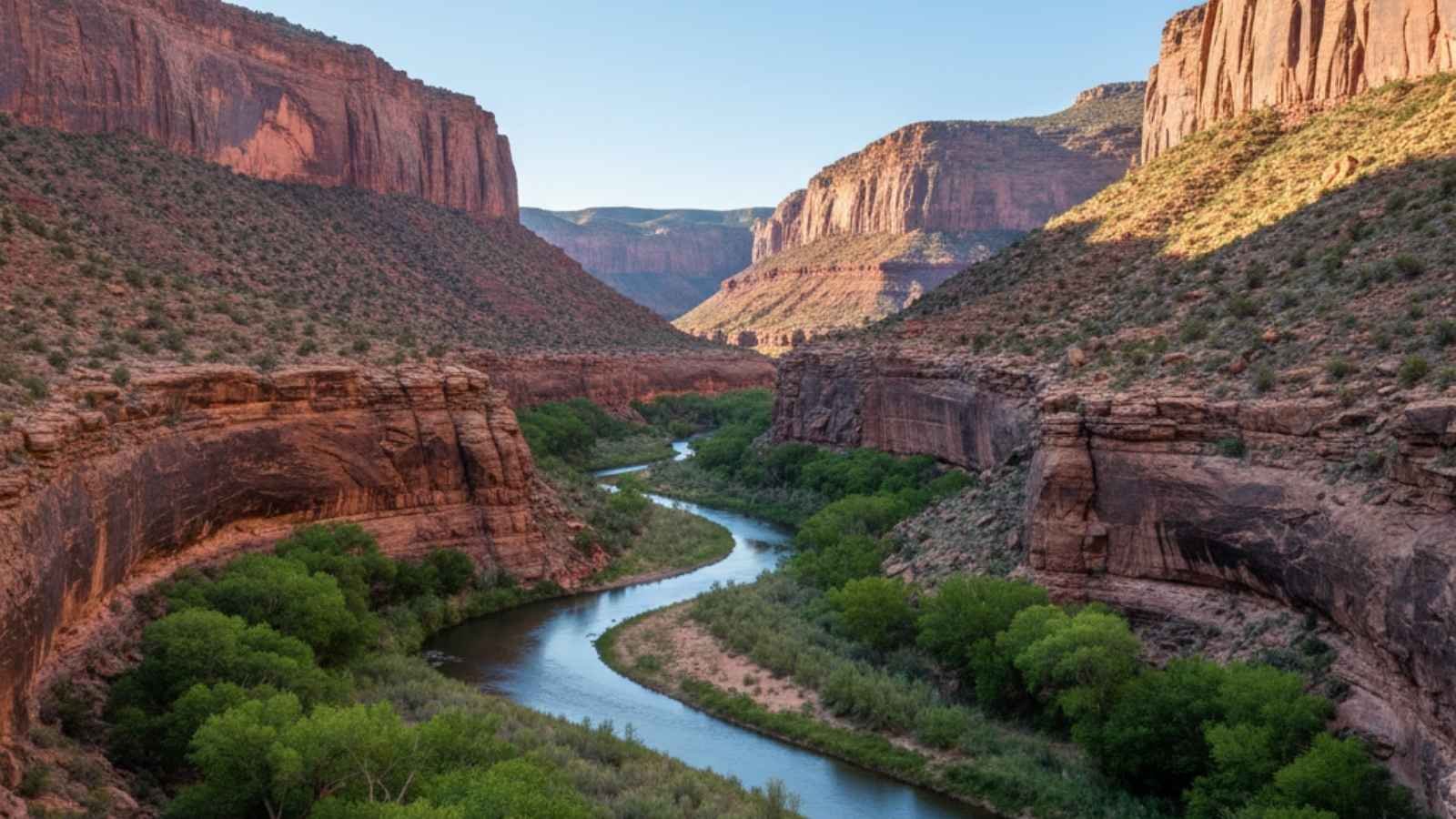
For solitude and red rock beauty, Dominguez Canyon Wilderness is a standout. Located along the Gunnison River, it’s a world away from Colorado’s alpine peaks—this is desert canyon country, with towering sandstone walls, ancient petroglyphs, and quiet pools carved by the river. It’s the kind of place where you can hike for hours and see more bighorn sheep than people.
The trails here wander through broad, sunlit canyons where every bend reveals something new: a waterfall tucked into the cliffs, centuries-old rock art etched into stone, or the simple stillness of desert silence. Unlike more famous canyons in Utah, Dominguez offers the same sense of grandeur without the crowds.
It’s a landscape that balances ruggedness with serenity. Whether you’re camping under starlit skies or simply hiking for a day, the wilderness feels raw, open, and deeply peaceful.
Quick Guide:
- Best Months to Visit: Spring and fall for mild temperatures.
- Nearest Town: Grand Junction, Colorado.
- Activities: Hiking, camping, petroglyph viewing, wildlife spotting.
- Good to Know: No services—bring all water and supplies.
- Bonus: Great option for backpackers seeking quiet alternatives to busy desert parks.






